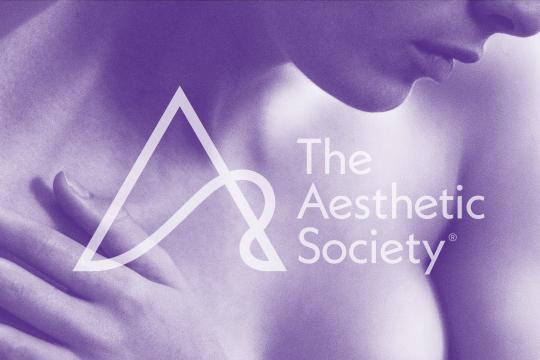Whoever came up with the term 'crow’s feet' must have had a serious vendetta toward the signs of aging… or toward crows. Either way, it's that term that stuck, and now here we are describing those pesky wrinkles at the outer corners of each eye as that… crow’s feet. While not always an indicator of age—crow’s feet do tend to make one appear older. And most of us can agree that the pesky lines are one sign of aging that we can do without. So in the spirit of doing without, we sat down with board-certified plastic surgeon, Dr. Jennifer Walden to get to the bottom of things. What are crow’s feet? Why do they occur? And what the heck can we do about them?
What are crow’s feet?
For starters, crow’s feet aren’t always 'crow’s feet'. To some they are 'laugh lines' and to others they’re 'character lines'. But calling them by different names doesn't make them different—they're always those clusters of tiny wrinkles and fine lines that form around the outer corners of the eyes that tend to become more and more pronounced as we age.
Crow’s feet fall into two main categories: dynamic and static. Dynamic crow’s feet are the lines and wrinkles produced by an action in the underlying muscle—say smiling or squinting—which generally dissipate once the action resolves. Static crow’s feet, on the other hand, are those same lines and wrinkles that are always there. Happy, sad, sleeping, comatose—those crow’s feet aren’t going anywhere… ever.
Why are they happening to me?!
There are multiple reasons why crow’s feet exist, the saddest perhaps is simply genetics. But there are other lifestyle factors that determine when and how deep your crow’s feet burrow into the delicate skin surrounding your eyes, and here are a few of them:
- Sun exposure: The fact that UVA light damages the collagen and elastin in your skin isn’t a big secret. What you may not know is that with enough sun exposure, your skin will begin to sag as if it were simply too defeated to bounce back, and that’s because, at that point, it probably is. With enough damage your dynamic lines and wrinkles will turn into static lines and wrinkles—otherwise known as the point of no return. To keep that from happening, you might want to reconsider slathering up with sunscreen on a daily basis… and possibly a hat.
- Squinting: Let’s venture back to the aforementioned ‘dynamic’ category of wrinkles caused by the repeated muscle contractions of squeezing your eyes closed, squinting to read something or protect your gaze from the sun, or smiling and laughing. These habitual expressions can eventually cause permanent (static) wrinkles that don't disappear when your expression does. Instead the repeated expression creates changes in your collagen, making the once ‘dynamic’ wrinkles permanent.
- Smoking: Joining the many, many, many negative effects of smoking, lighting up also damages the collagen and elastin fibers of the skin around your delicate eye area. The offending habit deprives the skin of oxygen, and also inadvertently causes you to squint to prevent smoke getting in your eyes. Sorry, not sorry for hitting this one so mercilessly, but seriously, do your inners and outers a favor and quit.
- Menopause: While the above causes of ‘crow’s feet’ are somewhat in your control, menopause is not. Estrogen, as we know, helps to maintain your skin’s collagen and elastin, and helps to keep the skin hydrated, which helps stave off those ‘crow’s feet’ enormously. But once menopause hits and your estrogen levels decline, you may notice that those once minimal ‘laugh lines’ become a lot less funny as they appear deeper and deeper. Your doctor may recommend hormone therapy to help stave off the inevitable, so ask what might be right for you.
What can I do?
Start by following a good anti-aging skincare routine. Keeping skin hydrated, regular exfoliation, liberal use of sunscreen, and the use of retinol eye creams will help lessen the look of any lines and wrinkles around the eye area, but there will come a time when there isn’t enough eye cream in the world… and that’s where Dr. Walden comes in with the 411 on the non-surgical solutions that can make a big difference when it comes to the appearance of the offending ‘feet’.
Dr. Walden starts by assessing how pronounced a patients ‘crow’s feet’ are, which will determine the best method of treatment. "Mild crow’s feet can be treated with a neurotoxin such as Botox or Dysport, essentially paralyzing the muscle in the lateral part of the orbicularis oculi, the circular muscle that makes the wrinkle when one smiles or squints," she explains. By temporarily blocking the surrounding muscle’s ability to make the habitual squinting expression, the neurotoxins are able to relax and smooth out the area. Results can last from 3-6 months, though long term use has been shown to extend the need for additional treatment sessions.
For moderate to severe crow’s feet, Dr. Walden recommends a different tactic. In conjunction with a neurotoxin injection, Dr. Walden recommends resurfacing the area, treating the lines and the overlying skin with a one-two punch to accomplish smoothing and temporarily relaxing the muscle that’s causing all the drama to keep it from contracting.
Laser resurfacing can be used to help remodel the skin as these creases have been made over a long period of time and can be rather deep in the superficial skin layers,” she explains, “and not solely contributed to by the underlying orbicularis oculi muscle."
She adds that while dermal fillers are another option, they are not usually the first line of defense for treating this condition. "Fillers may be done for a deep crease or two when someone needs a "quick fix" for a wedding or an event, but should be done judiciously.” Noted.
From laser resurfacing to Botox, to fillers and beyond—there’s a great big toolbox of non-surgical treatments available with which to fight the battles of aging—including treating ‘crow’s feet,’ and lucky for you, your doctor is just the person to help you decide which which ‘tool’ is right for you.








